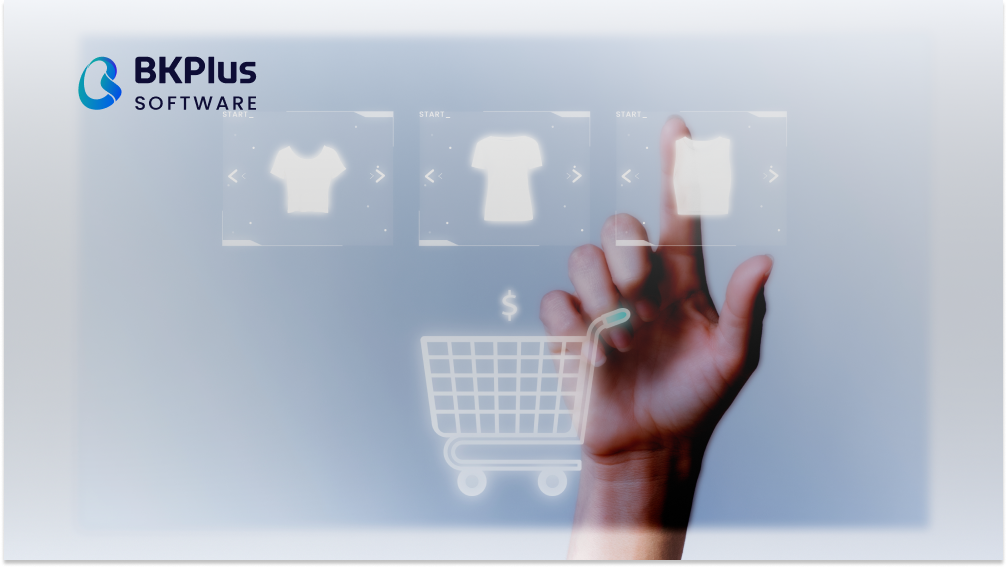E-commerce is now a cornerstone of daily life, driven by relentless technological innovation. These advancements are sparking new eCommerce trends that transform online shopping. Here are the top five global eCommerce trends, including the pivotal AI eCommerce trend, to watch in 2025.
1. AI-Powered Personalization Redefines Customer Experiences
Artificial intelligence is at the forefront of eCommerce trends, revolutionizing how brands connect with customers. The AI eCommerce trend focuses on delivering hyper-personalized experiences that cater to individual preferences, increasing engagement and loyalty.
The Rise of AI-Driven Personalization
AI analyzes vast amounts of data, browsing history, purchase patterns, and social media activity, to create tailored shopping experiences. For instance, AI algorithms recommend products based on past purchases or predict future needs. In 2025, brands like Amazon and Shopify will leverage AI to deliver dynamic product suggestions, personalized emails, and customized website layouts that adapt in real-time to user behavior. AI-powered chatbots, now more sophisticated, handle complex queries with human-like responses, assisting with purchases and upselling complementary items. This personalization strengthens trust and drives conversions, positioning the AI eCommerce trend as a cornerstone for businesses aiming to differentiate.

Challenges and Opportunities in AI Personalization
The AI eCommerce trend significantly boosts conversion rates, with studies showing personalized recommendations can increase sales by up to 30% (McKinsey & Company, 2023). By anticipating needs and delivering relevant content, AI reduces cart abandonment and fosters repeat purchases. However, challenges like data privacy concerns and the need for robust AI infrastructure persist. Advancements in AI ethics and secure data handling are addressing these issues, offering businesses opportunities to build trust. As AI evolves, its role in eCommerce trends will expand, providing a competitive edge for seamless, customer-centric experiences.
2. Sustainability as a Core eCommerce Strategy
Sustainability is a critical component of eCommerce trends in 2025. Consumers increasingly prioritize eco-friendly brands, prompting businesses to integrate sustainable practices into their operations.
The Rise of Sustainable eCommerce Practices
Shoppers, especially Gen Z and Millennials, demand transparency about product sourcing, packaging, and shipping. eCommerce platforms are adopting green initiatives like carbon-neutral shipping and biodegradable packaging. Companies such as Patagonia and Allbirds set benchmarks by using recycled materials and offsetting carbon footprints. The AI eCommerce trend supports sustainability by optimizing supply chains, with machine learning predicting demand to minimize overproduction and waste. This reduces environmental impact and aligns profitability with eco-conscious values, making sustainability a key driver of eCommerce trends.
Challenges and Opportunities in Sustainable eCommerce
Sustainable eCommerce trends build trust, with 68% of consumers willing to pay a premium for eco-friendly products. Certifications like Fair Trade or B Corp appeal to conscious shoppers, while storytelling about a brand’s sustainability journey fosters emotional connections. Challenges include higher costs for eco-friendly materials and complex supply chain adjustments. Yet, opportunities arise from cost savings through AI-driven efficiencies and growing consumer demand for green brands. In 2025, sustainability will remain a cornerstone of eCommerce trends, balancing ethics and financial success.
3. Immersive Shopping with Augmented Reality (AR) and Virtual Reality (VR)
The rise of AR and VR marks a significant shift in eCommerce trends, creating immersive shopping experiences that bridge physical and digital retail.
The Rise of AR and VR in eCommerce
AR enables customers to visualize products in their environment before buying. IKEA’s AR app, for example, lets users place virtual furniture in their homes to check fit and style, while L’Oréal’s AR tools offer virtual makeup try-ons. VR creates immersive virtual stores where shoppers browse as if in a physical space. The AI eCommerce trend enhances these technologies by personalizing experiences, suggesting products during try-ons, or tailoring virtual store layouts to individual preferences. These innovations make shopping engaging and reduce return rates by ensuring informed purchases.

Challenges and Opportunities in Immersive Technologies
Immersive technologies boost sales, with AR-enabled experiences increasing purchase likelihood by 40%. Retailers benefit from lower returns, as customers are less likely to be disappointed. However, high development costs and device accessibility pose challenges. As AR/VR tools become more affordable, their integration into eCommerce platforms will grow, solidifying their place among 2025’s top eCommerce trends. Opportunities lie in creating captivating experiences that drive engagement and loyalty in a competitive market.
4. Voice Commerce Gains Momentum
Voice commerce is a powerful eCommerce trend, fueled by the adoption of smart speakers and voice assistants, making shopping faster and more intuitive in 2025.
The Rise of Voice-Activated Shopping
Devices like Amazon’s Alexa, Google Assistant, and Apple’s Siri enable seamless voice commerce. Customers can search products, compare prices, or order with commands like “Alexa, order organic coffee beans,” triggering purchases based on preferences or recommendations. The AI eCommerce trend is vital, as AI processes natural language for accurate query responses. Retailers optimize platforms with conversational keywords and structured data to appear in voice search results, aligning with eCommerce trends focused on meeting customers’ needs conveniently.
Challenges and Opportunities in Voice Commerce
Voice commerce faces challenges like privacy concerns and the need for precise voice recognition. Advancements in AI are improving reliability, creating opportunities for businesses to tap new revenue streams, especially for subscription-based products like groceries. By 2025, voice commerce is projected to account for 10% of online sales, reinforcing its role as a key eCommerce trend. Retailers embracing voice optimization can capitalize on its convenience to drive sales and customer satisfaction.
5. Social Commerce Evolves with Shoppable Content
Social commerce is redefining eCommerce trends by transforming social media into sales channels, driving impulse purchases and brand discovery in 2025.

The Rise of Shoppable Social Media
Social commerce integrates shopping into platforms like Instagram, TikTok, and Pinterest. Instagram’s Shop feature tags products in posts for instant checkouts, while TikTok’s live shopping events, led by influencers, gain traction among younger audiences. The AI eCommerce trend powers targeted ads and content by recommending products based on user interests. This seamless experience, where customers discover and buy through engaging content, aligns with eCommerce trends prioritizing convenience and speed.
Challenges and Opportunities in Social Commerce
Brands succeed by creating authentic content and collaborating with aligned influencers to boost credibility. AI-driven analytics optimize campaigns for better ROI. Challenges include content saturation and platform algorithm changes, but opportunities abound in leveraging AR try-ons and AI-curated feeds to enhance engagement. Social commerce remains a dynamic eCommerce trend, blending entertainment with shopping.
Conclusion
The eCommerce trends of 2025, AI-powered personalization, sustainability, AR/VR, voice commerce, and social commerce are reshaping the industry. The AI eCommerce trend underpins these innovations, enabling personalized, efficient, and engaging experiences. By adopting these trends, brands can meet consumer expectations, drive sales, and stay competitive.
At BKPlus Software, we help businesses leverage these eCommerce trends with cutting-edge solutions. From AI personalization to voice and social commerce optimization, our expertise ensures your brand thrives in 2025. Embrace these trends to unlock opportunities and build lasting customer relationships.



